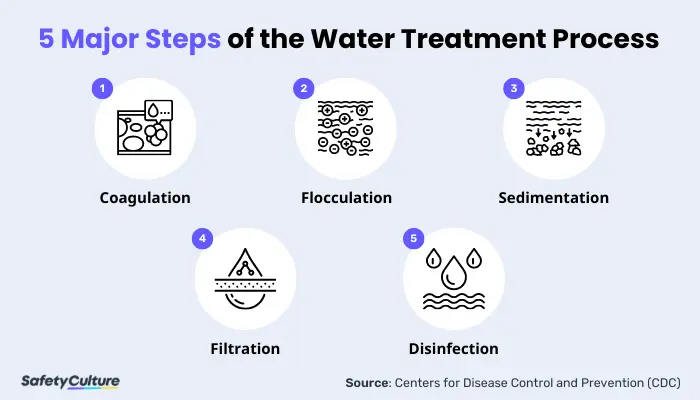Exploring the Environments
What is Water Treatment?
Water treatment refers to the process of improving the quality of water with the purpose of serving an end-use. The most common end-uses include drinking water, industrial water supply, water recreation, and for replenishing environmental sources, such as rivers and lakes.
Why is Water Treatment Important?
Clean water is a basic necessity for humans. While the human population grows, the demand for water grows as well. Since water is a finite resource, used water must be treated to continuously serve end-uses. This is where the importance of water treatment systems comes in.
Water treatment helps in removing contaminants and hazardous substances from the water, making it clean and safe to drink and be used for other purposes. Unfortunately, almost 2 billion people in the world use either untreated drinking water or get water from unsafe or contaminated sources. Having systems in place to improve water quality helps intervene in these situations and prevent unsafe water-caused incidents, such as water-borne diseases and fatalities.
On the other hand, water treatment is also helpful in ensuring that water gets reintroduced back to nature’s cycle. One of the end-uses of this process is to safely return water to environmental sources like rivers, lakes, and oceans. Of course, water treatment facilities must ensure that water is free from harmful substances before doing so to avoid contamination and other environmentally disastrous issues such as water pollution.
The United States Environmental Protection Agency (EPA) sets forth guidelines for organizations for protecting the environment and human health. One of the violations that an EPA report helps keep in check regarding an organization’s compliance with environmental safety is the illegal discharge of pollutants that could end up in bodies of water. An example of this is dumping untreated and contaminated wastewater directly into the sewer system, which is a violation of the Clean Water Act.
Process
In most cases, water treatment plants are responsible for collecting, treating, and distributing supplies of water, whether for residential, commercial, or industrial uses. Globally, these facilities may follow slightly different processes in their water treatment systems. However, their methods are all based on similar stages depending on the end use they aim to achieve.
What are the 5 steps of water treatment?
According to the Centers for Disease Control and Prevention (CDC), the overall water treatment process, especially for public water systems, consists of 5 major steps:

Water Treatment Process | Source: Centers for Disease Control and Prevention (CDC)
1. Coagulation
The first step of getting water treated is through coagulation. This involves adding chemicals with a positive charge to the water which should neutralize the negative charge of dirt and other dissolved substances. Such chemicals include iron and specific types of salt.
2. Flocculation
This step refers to the process of gently mixing the water to create larger, heavier particles known as flocs. In most cases, additional chemicals are being added to the water to allow the flocs to form easily.
3. Sedimentation
Once flocs form, they settle to the bottom of the water because they are heavier. This is called sedimentation in water treatment, which is one of the processes that water treatment plants use in separating the solids, such as flocs, from the water before going to the next step.
4. Filtration
The water again goes through another process of solids separation through filtration. The separated, clear water on top now passes through filters with various pore sizes, made from different materials such as sand and gravel. Ultimately, these filters are in place to help remove dissolved particles and unwanted substances from the water.
5. Disinfection
During this step, any remaining parasites, bacteria, and viruses must be eliminated. This can be done by adding one or more chemical disinfectants to water such as chlorine or chlorine dioxide. Why do water treatment plants do this? It’s to keep water safe when traveling from the water treatment plant to homes and businesses because chemical disinfectants help eliminate the remaining unwanted microorganisms before the water reaches the intended end-use.










